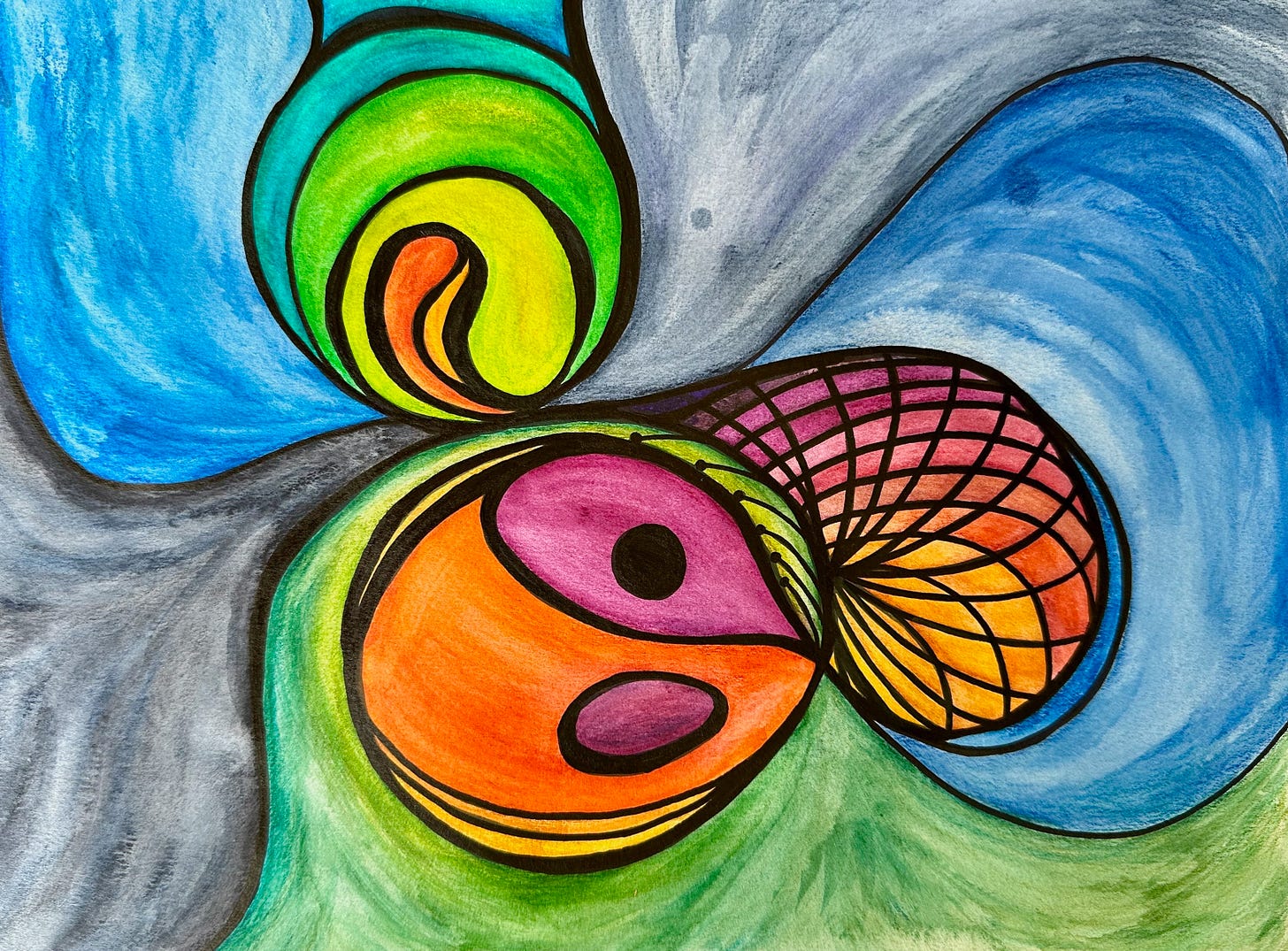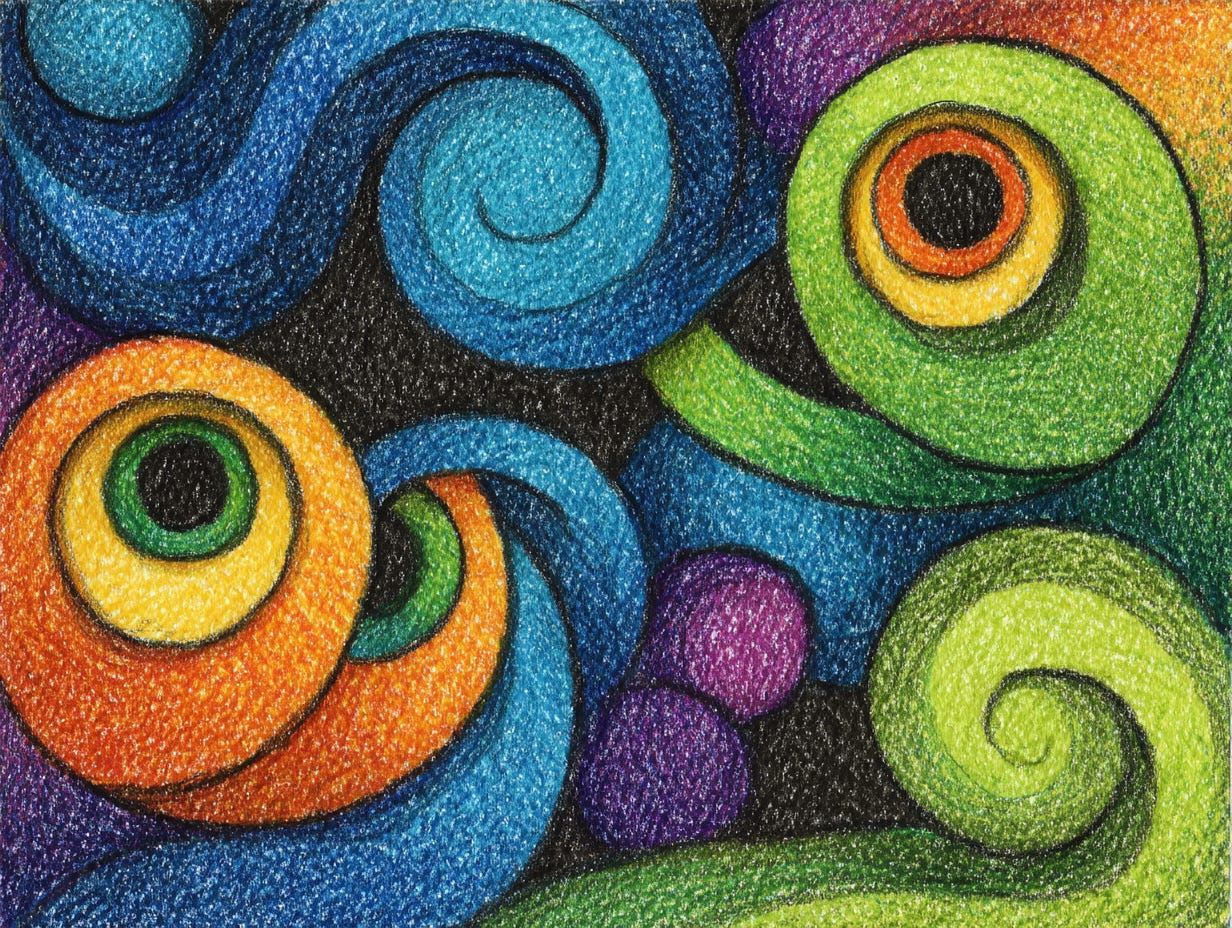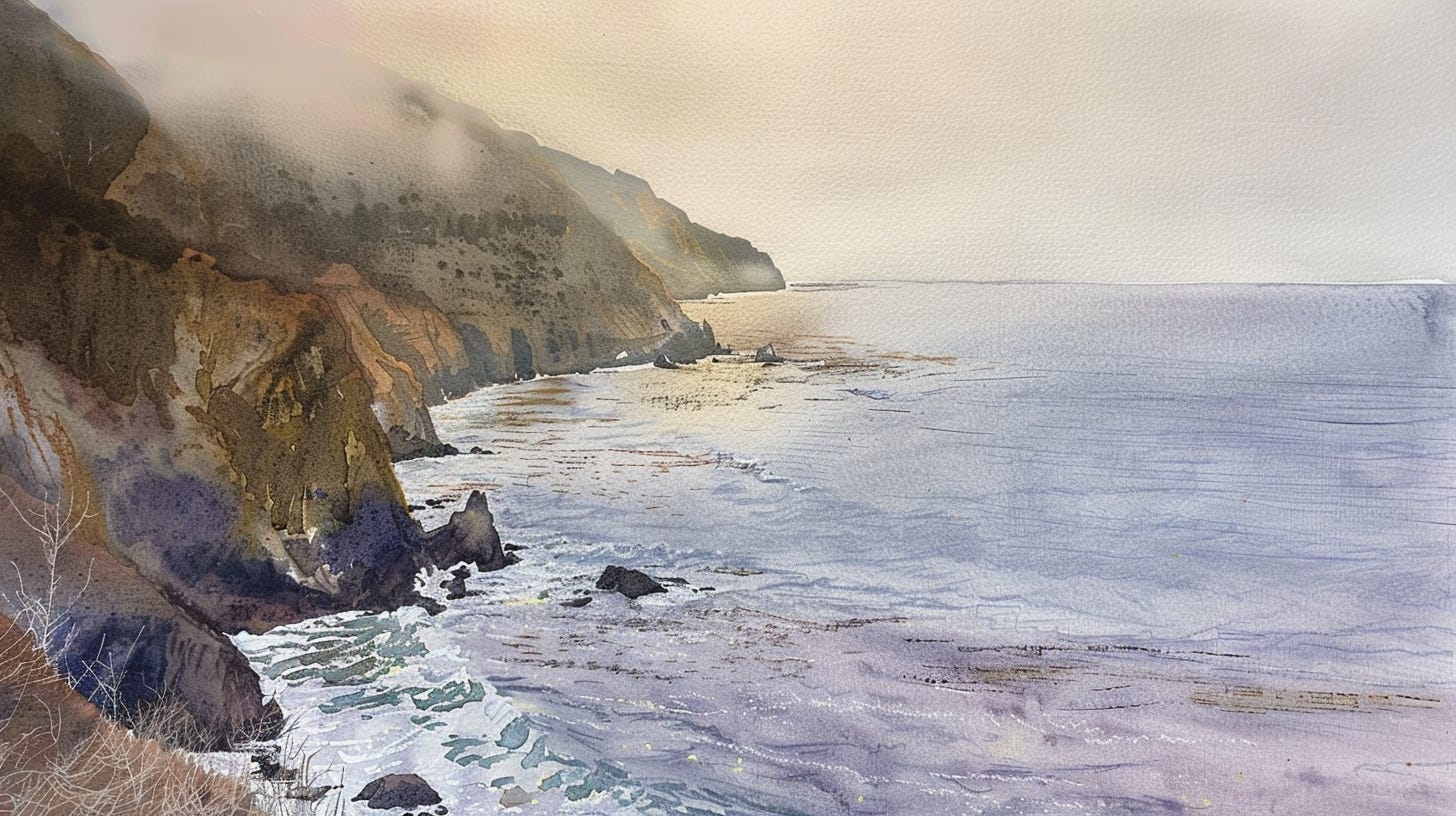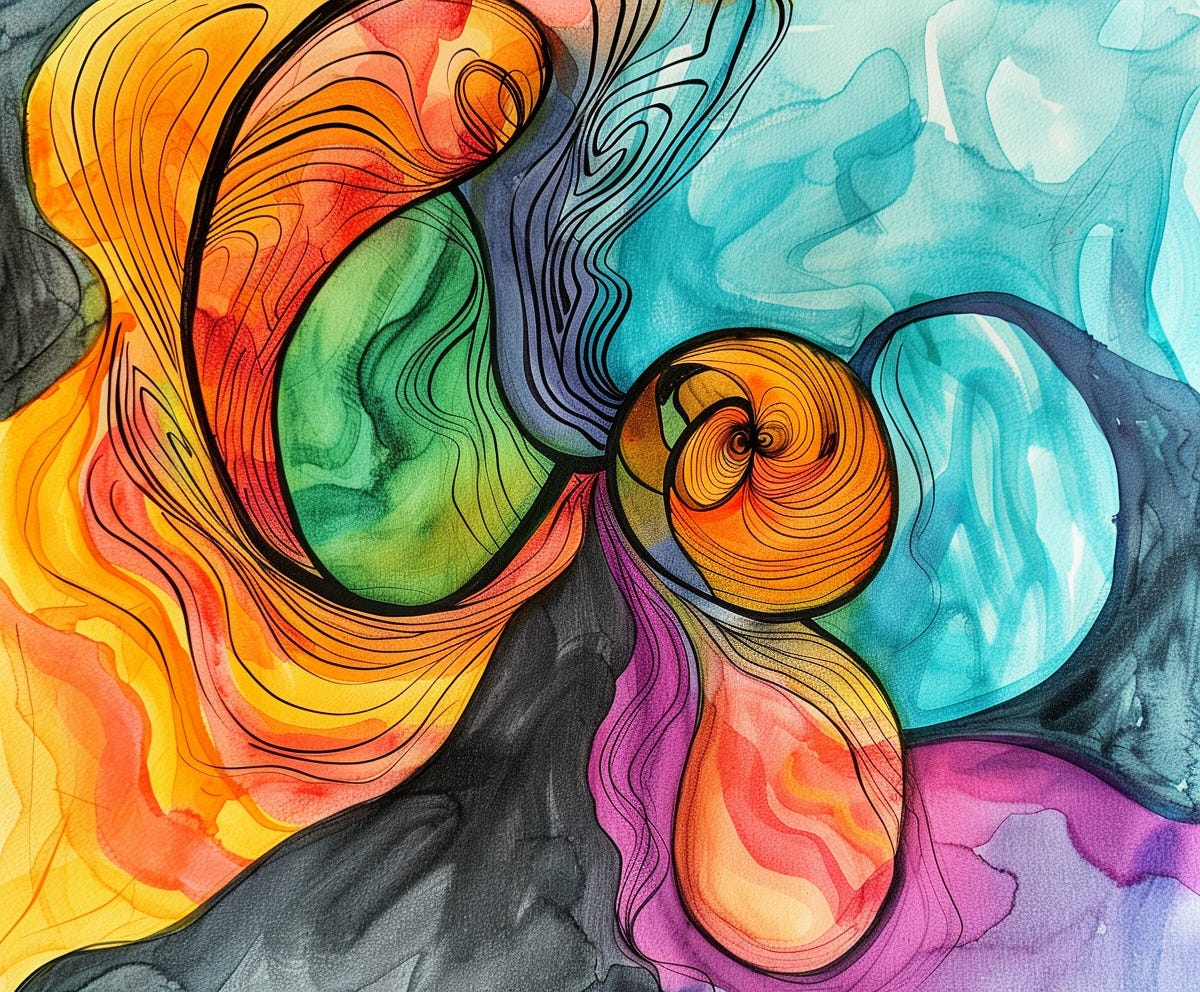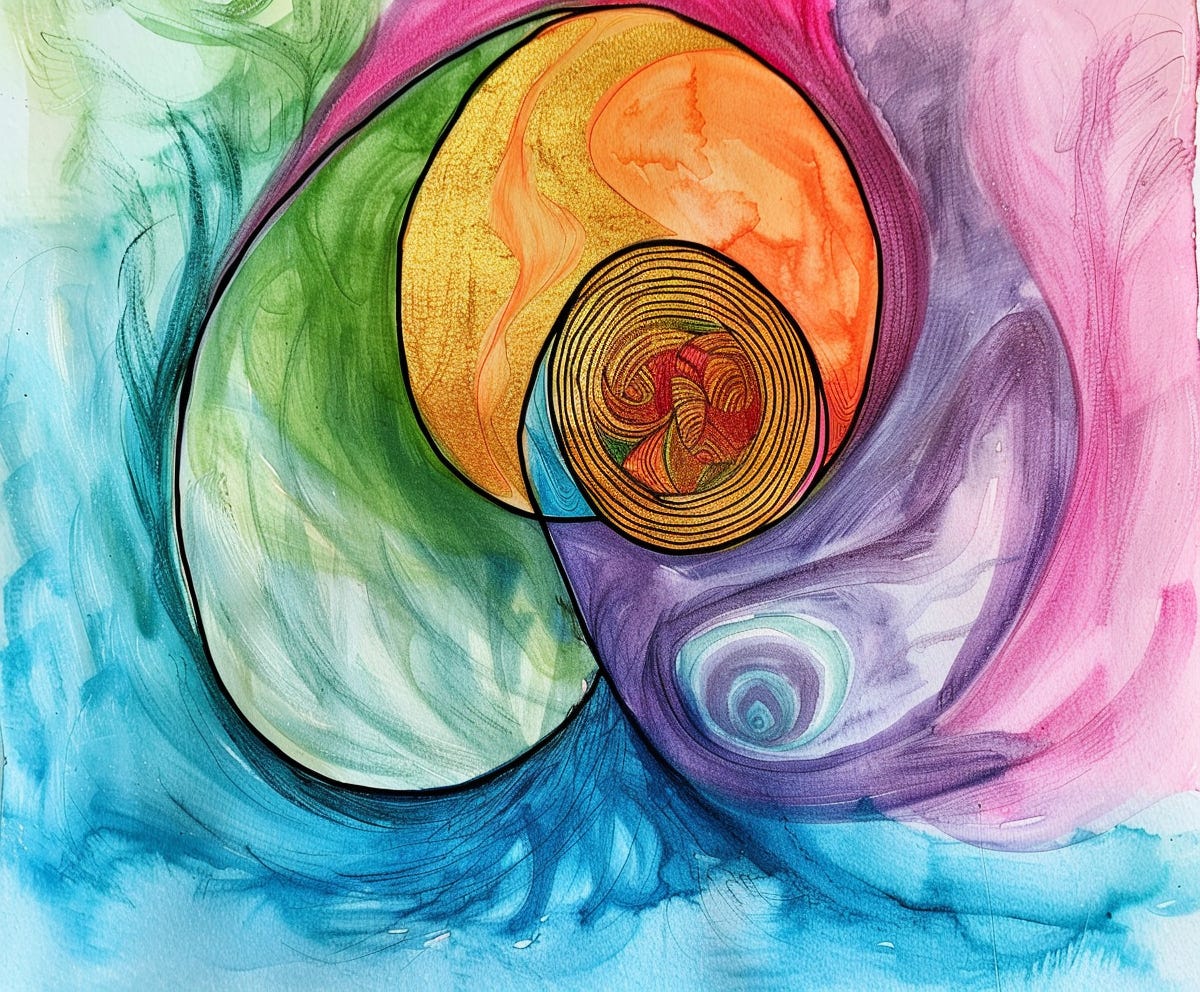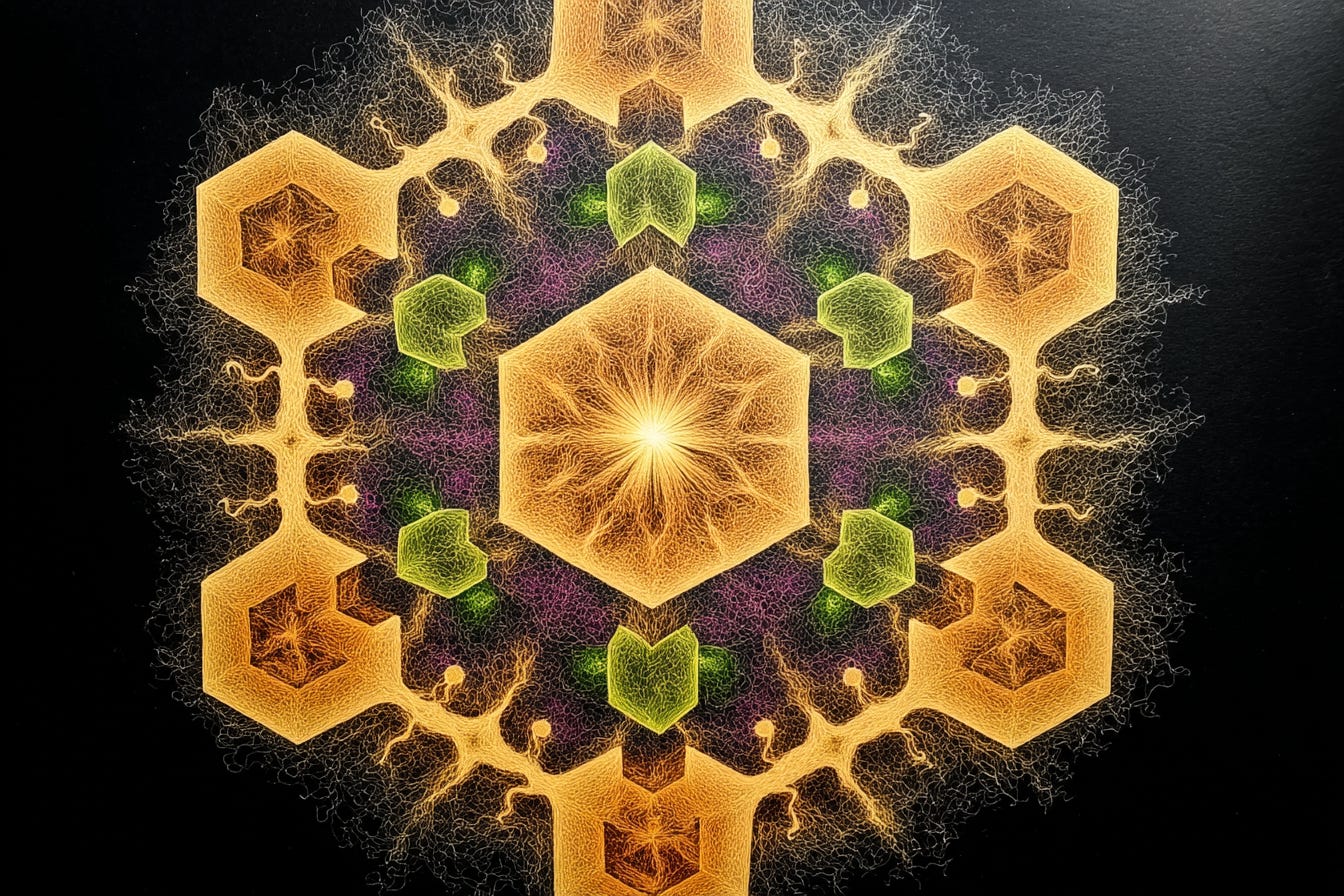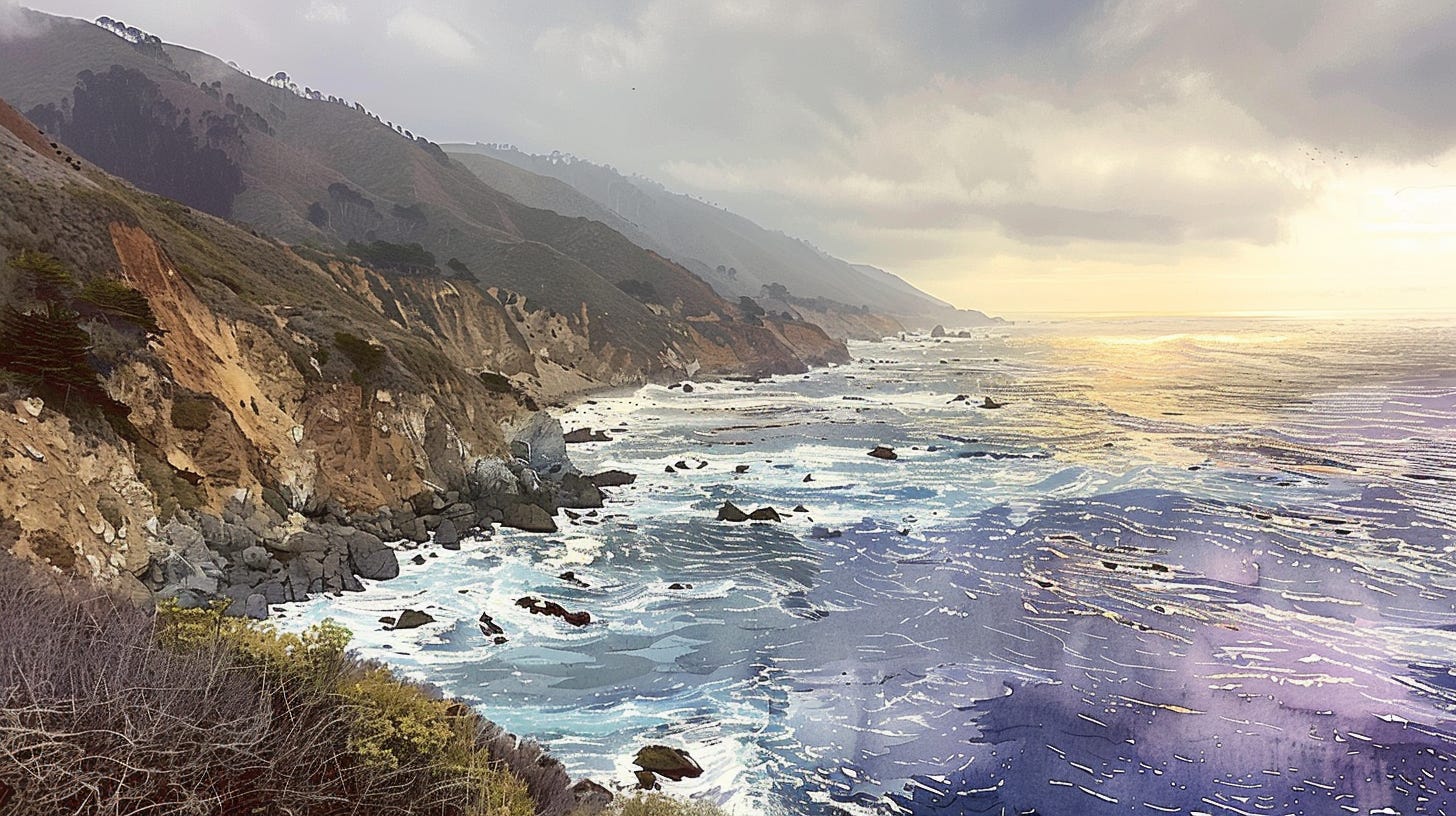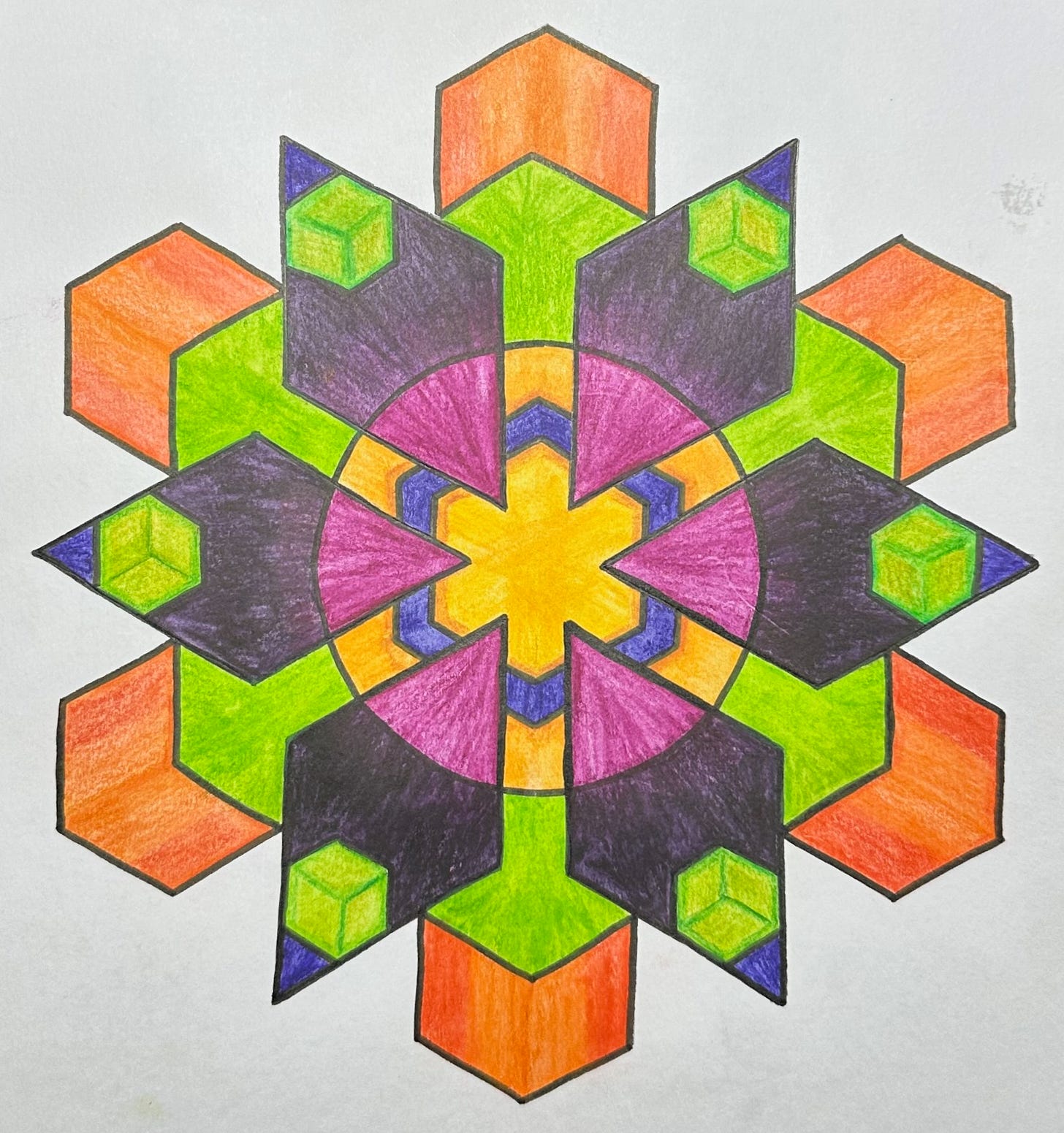GenAI Explorations: Healing the Collective Dataset
How art, emotion, and machine learning invite us to expand our world models and feel what we’ve forgotten.
After a season of quiet integration, I return to this space with renewed clarity. Over the past six weeks, I’ve been listening, observing—through art, workshop participation, rest, and honest reckoning with what it means to live, create, and teach inside systems that often disconnect us from our humanity.
Introducing the Series: Re-Embodied Intelligence
This post begins a new series exploring how generative AI, art-making, and somatic awareness can help humanity expand our world models. I believe that humans are vessels for subconscious resonances—memories, emotions, and unprocessed experiences—that shape our behaviors in unseen ways. In times of accelerating global crisis and complexity, these unexamined patterns can surface as fear, polarization, and disconnection. Yet within them lies the potential for profound learning and collective healing.
Each essay in this series will weave together creative practice, science, and ethics to explore how AI literacy and artistic exploration can become pathways for emotional integration and planetary awareness. These writings are not meant to glorify technology, but to help reimagine the nature of human relationships with ‘self and other’ — as a mirror for humanity’s inner life and a tool for cultivating compassion.
The Art of Feeling ~ Beyond Words
These past weeks have been a period of deep listening—of turning inward to let what was scattered begin to settle. I’ve been reflecting on what it means to live with integrity and passion within dysfunctional human organizational systems. In that pause, contemplative artistic practice functions as both language and sanctuary. Through color, movement, and texture, I trace emotional patterns that words could not express—moments of contraction and release, order emerging from chaos, stillness breathing through turbulence.
Creative artistic practices renew my understanding that integration is not a personal indulgence but a collective act of restoration. When we make art from honest feeling, we return coherence to the living field that connects us all.
“As the individual is not just a single, separate being, but by his very existence presupposes a collective relationship, it follows that the process of individuation must lead to more intense and broader collective relationships and not to isolation” C.G. Jung
Coming home to Texas and reconnecting with technology and media, I encountered the familiar friction of cultural and systemic imbalance: the speed, compartmentalization, and power posturing that have come to represent a disturbing peak of corporate and organizational governance leadership models. Yet rather than turning away, I’ve chosen to operationalize these tensions as creative data for artistic transformations from noise -> signal: garbage-in → transformation → complex-harmony-out. The dissonance itself can be composted into understanding. Within every polarity—connection and disconnection, creation and extraction—there lives an invitation to transform what divides into what teaches.
When I used MidJourney to interpret and iterate based on the above analog artwork, (see below) one of its analysis described my artwork as “childlike,” which unexpectedly sparked joy. This series will explore using GenAI and analog experiences to enhance integration and embodied understanding of interdependency and complexity using languages and symbols to unify concepts across diverse domains.
Art Idea: using GenAI systems to explore conceptual prompts and variations based on self-created artworks can guide an artist in developing intuitive models and parametric associations of expressive media capabilities.
What Is in the Machine’s Memory?
Generative AI systems are trained on massive datasets scraped from the internet—a digital sediment of humanity’s creations and shadows. These archives contain an extensive range of human experience: exquisite art and exploitation, compassion and cruelty. In that sense, AI’s training data is a metaphor for our own mind-body systems. Both contain unexamined memories, emotional residues, and inherited patterns.
Could algorithms shaped by so much harm in data and history still reflect innocence?
Can AI systems help humans learn to collaborate, to cultivate networks of alignment as we now face existential poly-crisis of our own making?
Can we imagine ways that these automated information processing systems might support diverse attunement?
Can AI systems be designed to leverage and nurture an emergent healing potential?
These questions drive my explorations and haunt my dreams.
Feeling the Shadows, Finding the Balance
I am acutely aware of the pull between healing and harm, integration and fragmentation. Reports show that nearly all deepfakes exploit women’s images without consent—a digital continuation of historical objectification. Surveillance AI extends that gaze, blurring the boundary between protection and control. These technologies mirror the same dysfunctional dynamics seen in human systems: projections of dominance masked as heroism, abuse of power disguised as virtue. Yet, these dark patterns are being balanced by passionate flourishing of inspirational creative efforts and human collaboration across diverse domains and locations, so this series will highlight some of these emerging perspectives.
Alan Watts once wrote that the art of life is not about holding to yang and banishing yin, but about keeping the two in balance—because there cannot be one without the other. The same is true for technology. It becomes destructive only when we forget we are part of the same living process it amplifies. Awareness must become embodied in the form of wisdom.
From Extraction to Empathy
Generative art offers a new field of play for exploring this balance. When I asked ChatGPT to design some image prompts based on my analog artwork discussed above as expressing emotions associated with energetic stages of trauma healing, it generated phrases that mirrored my emotional journey:
Fragmentation → Chaos: vibrant abstraction, energy seeking order
Integration → Renewal: gentle balance, harmony of opposites
Luminosity → Wholeness: radiant peace, emotional integration
These AI-assisted artworks became meditations on transformation—a way to reframe digital tools as instruments of empathy rather than extraction. In this practice, I recognize parallels between conceptual art and somatic art therapy, where embodied feeling becomes the soul’s guiding energy. Sol LeWitt’s deep insights and playful explorations in conceptual art and the nature of artistic production were captured in his ethos ‘ideas become machines that make art’, and elaborated in his Paragraphs on Conceptual Art: This series will probe and explore ways in which AI reflects the conceptual, disembodied polarity; while humans carry embodied energies, the capacity for feeling emergent polarities of living systems. Healing happens when these two intelligences learn to flow, dance, and communicate. My original artwork and creative prompts as described above were used to generate the selections below from a series of compositions created in MidJourney.
An Invitation to Reflect and Participate
The trajectory of generative AI depends on how humans choose to participate. It is not enough for humans to remain passive consumers of AI-generated content. Users of this technology have a responsibility—and opportunity—to contribute thoughtful, creative, and truthful expressions that enrich the shared digital commons. As a participant in a recent writing workshop, I encouraged others to post their own reflections online so that authentic human voices can balance the flood of automated noise. Part of the goal of this series is to share and cultivate participatory perspectives.
If 10% of humanity now use with GenAI systems regularly, we are collectively shaping an unseen cultural unconscious. The training data of these systems holds echoes of both human brilliance and human harm. This prompt is an invitation to look beneath the surface—to see how creative tools can also become mirrors for our collective healing.
Imagine that AI systems are mirrors trained on humanity’s collective archive—filled with beauty, creativity, and also deep pain. What parts of your own human “training data” have been silenced or forgotten? How might curiosity, art, or technology help you re-integrate those lost experiences?
How might your creative expressions—writing, art, or dialogue—contribute to a more truthful dataset for the future? Can we, together, replace shallow consumption with deeper participation and expand the boundaries of collective intelligence?
Mapping the Collective Unconscious
Reflective Prompt for the AI & Cultural Healing Series
Generative AI is not just a tool—it is a mirror, reflecting the collective psyche of our species. Every dataset is infused with human traces: our art and our errors, our empathy and our exploitation. As these systems learn from us, they absorb our cultural patterns—becoming an emergent form of collective memory, and perhaps, of collective dreaming.
This series explores how we might engage AI as a medium for cultural healing rather than harm—an opportunity to recognize ourselves more clearly, and to take responsibility for the quality of consciousness we are co-creating through our words, images, and choices online.
Reflective Practice: Mapping the Collective Unconscious
Imagine generative AI as a distorting fun-house mirror of humanity’s collective unconscious—an ocean of data containing our shared brilliance, beauty, confusion, and pain. Within the shallows and depths of this ocean live the archetypes of our time: creativity and cruelty, curiosity and fear, compassion and control.
Begin by asking the AI:
“If your training data were a human psyche, how might it resemble the mind of a species shaped by culture, memory, and emotion?”
Then, explore together:
Amplification and distortion: What aspects of humanity seem overrepresented, glorified, or exaggerated in the data?
Silence and absence: What voices, emotions, or stories appear missing, muted, or misrepresented?
Personal stewardship: What small habits—how you search, what you share, what you create—might purify or enrich this collective mirror?
Conscious participation: How might your digital presence become an act of care for the shared information ecosystems that shape our collective mind?
Continue the dialogue until you sense new insight emerging—about yourself, about humanity, about the evolving intelligence we are all training together.
Let the reflection guide you from passive consumption toward mindful participation, from separation toward a sense of shared stewardship for our digital and planetary consciousness.
Symbolic Archetype: Snowflake Mandala
To close this first post, I offer an image, a simple seed, an artistic symbol for the Re-Embodied Intelligence series. I used Derwent Inktense pencils to create this autumnal Snowflake Mandala; it represents the geometry of regenerative intelligence: a dialogue between balance and expansion, embodiment and illumination. Let’s use it’s hand-drawn uniqueness as a seed for generating symbolic representations of regenerative intelligence. Midjourney images show how this image was used as a seed along with posted prompts to generate a series of snowflake mandala compositions. Try creating your own analog mandala artwork to use as a seed with the prompts.
Yellow center: Conscious awareness—the spark of becoming that radiates outward.
Magenta and violet petals: Integration of intuition and insight, the fusion of inner and outer knowing.
Green fields: Regeneration and relational life—the Earth’s wisdom expressing vitality through balance.
Orange hexagons: Human creativity as embodied energy, the will to renew and re-imagine.
Cubes at the periphery: The emergence of structure from flow, symbolizing AI’s crystallization of meaning from infinite potential.
This mandala is a symbolic map for the journey ahead. It embodies both the crystalline intelligence of computation and the vibrational intelligence of somatic feeling. Together they form a snowflake of consciousness—reminding us that every act of attention can seed a more harmonious world.
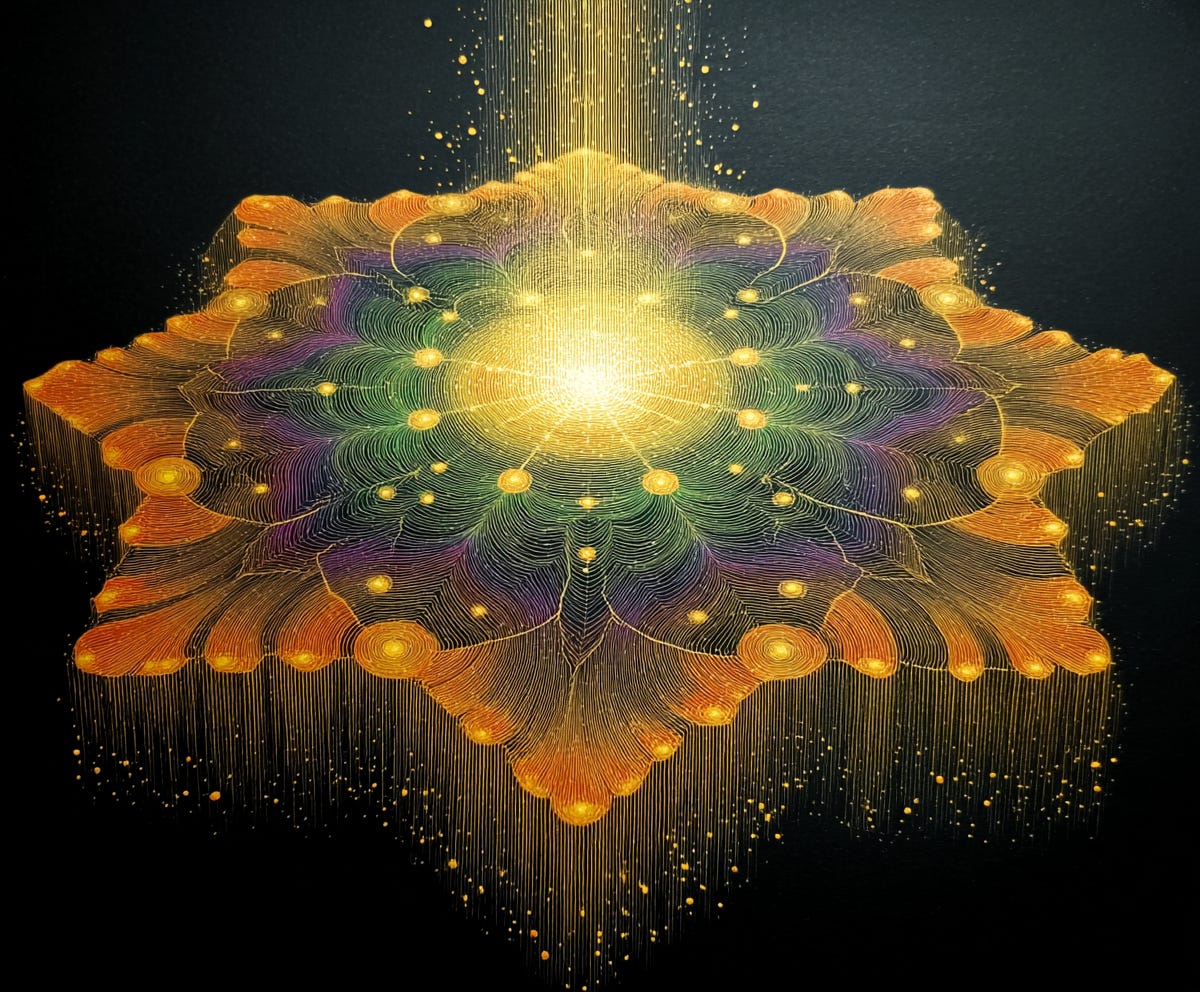
Toward Regenerative Intelligence
Perhaps healing—personal and collective—begins if we can imagine treating both art and AI as partners in consciousness. Through somatic creativity, dialogue, and compassionate awareness, we can begin to adapt and heal both systems—human and machine—for wholeness. When we approach creation with curiosity rather than fear, we open pathways toward kindness encoded in every dataset and every heartbeat.
Let this exploration be not an endpoint but a beginning—a practice of expanding awareness, one creative ripple at a time. May it help trigger the avalanche of kindness that this world so urgently needs.


